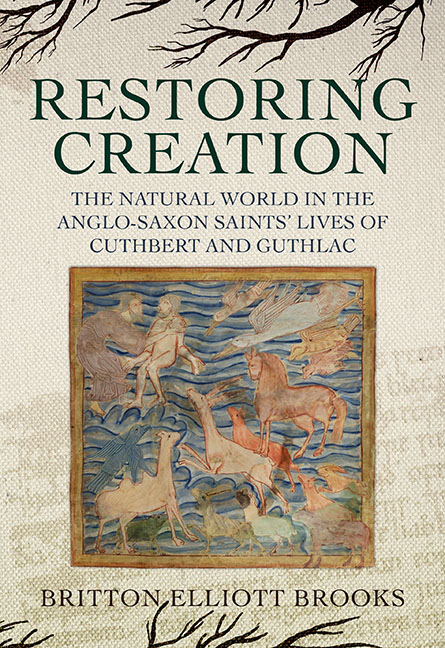 Restoring Creation: The Natural World in the Anglo-Saxon Saints' Lives of Cuthbert and Guthlac
Restoring Creation: The Natural World in the Anglo-Saxon Saints' Lives of Cuthbert and Guthlac Published online by Cambridge University Press: 18 September 2019
At the heart of the various vitae of Cuthbert and Guthlac explored in this study lies the relationship of the saints with Creation which, I have argued, was fundamental to their role as saints. While sometimes regarded as only an allegorical signifier for heavenly ideas, Creation in these early vitae functioned in a much more complex and physical way. Sanctity was achieved and experienced within delineated portions of the Anglo-Saxon landscape. Though each text under consideration engages with Creation in different ways, their shared Augustinian/Bedan exegesis frames their saints’ interactions with Creation, and allows for a comparative analysis that lends the distinctions weight and colour. Given the constraints of space, this study necessarily excludes the later traditions of both saints. The findings outlined here, however, invite further analysis on the role of Creation within the later literary iterations of the Cuthbertine and Guthlacian cults, pointing the way for further study. I will consider briefly some of them below.
Saint Cuthbert's popularity continued throughout the medieval period, and the central role of the relationship between Cuthbert and Creation remained. This is evidenced, for example, in the late Old English poem Durham, which focuses on the city that by the time of the poem's composition was the resting place for both Cuthbert and his cult. While the poem has often been interpreted as an encomium urbis for the city, Helen Appleton has persuasively argued that though it utilises this form, Durham is better understood as focusing on Cuthbert himself. Durham opens with a description of the city that emphasises the physical landscape in which it resides, highlighting two distinct features that echo the depictions of Creation in the vitae of Cuthbert: first, with regard to the landscape itself, Durham is surrounded by water, an echo of both Lindisfarne and Farne; second, the waters, wooded hills, and dales are overflowing not simply with animate life, but specifically with wild animals that are part of the positive description.
To save this book to your Kindle, first ensure [email protected] is added to your Approved Personal Document E-mail List under your Personal Document Settings on the Manage Your Content and Devices page of your Amazon account. Then enter the ‘name’ part of your Kindle email address below. Find out more about saving to your Kindle.
Note you can select to save to either the @free.kindle.com or @kindle.com variations. ‘@free.kindle.com’ emails are free but can only be saved to your device when it is connected to wi-fi. ‘@kindle.com’ emails can be delivered even when you are not connected to wi-fi, but note that service fees apply.
Find out more about the Kindle Personal Document Service.
To save content items to your account, please confirm that you agree to abide by our usage policies. If this is the first time you use this feature, you will be asked to authorise Cambridge Core to connect with your account. Find out more about saving content to Dropbox.
To save content items to your account, please confirm that you agree to abide by our usage policies. If this is the first time you use this feature, you will be asked to authorise Cambridge Core to connect with your account. Find out more about saving content to Google Drive.